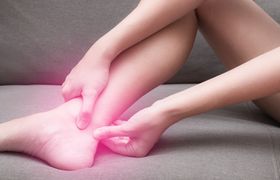Upstep Answers
Our team answers your questions about the causes and treatment of various podiatric conditions, including plantar fasciitis, flat feet, foot pain, and the use of custom orthotics.
Recent Answers
How to Stop Your Inner Ankle From Hurting When Running
Did you notice sudden pain in your ankle while running? Here's what you can do to relieve it.
Asked 6 months ago
High Arches & Overpronation: Can You Have Both at the Same Time?
Navigate the challenges of high arches and overpronation, and discover how to find the perfect solution for your unique needs
Asked 7 months ago
Can You Use FSA or HSA to Buy Custom Orthotics?
If you are interested in buying custom orthotics but are concerned about the cost, it's a little-known fact that you can purchase a pair from Upstep with your FSA and HSA dollars before they expire. W
Asked 7 months ago
How Do You Perform Eccentric Heel Raises Correctly?
If you like to run or take long walks, an eccentric heel raise is a good exercise to incorporate into your home program. Not only does it strengthen the calf muscles, but it also helps prevent Achille
Asked 7 months ago
Golfer's Knee: How to Prevent and Treat Injuries
While golf may seem like a relatively low-risk sport, there is actually a lot that can go wrong. Golf may look like a low-impact sport, but the sheer force that goes into the swing can easily cause in
Asked 7 months ago
Related Articles

Can Orthotic Insoles Help Treat Achilles Tendonitis?
Dr. Pooja Gajare
March 24, 2023

Why Different Athletes Experience Different Benefits From Orthotics
Upstep Staff
September 18, 2024

3 Best Insoles for Preventing Shin Splints
Babafemi Adebajo
December 9, 2024

Best Insoles for Snowboard Boots for Navigating Snowy Trails
Janik Sundstrom
December 5, 2024

How Your Foot Health Affects the Rest of Your Body
Janik Sundstrom
April 23, 2025
Recent Posts
Janik Sundstrom
DIY Orthotics: Risks of DIY & Safe Custom Alternatives
Upstep Staff
Best Insoles for Managing Overpronation
Janik Sundstrom
Best Cycling Shoe Insoles to Provide Arch Support
Janik Sundstrom



